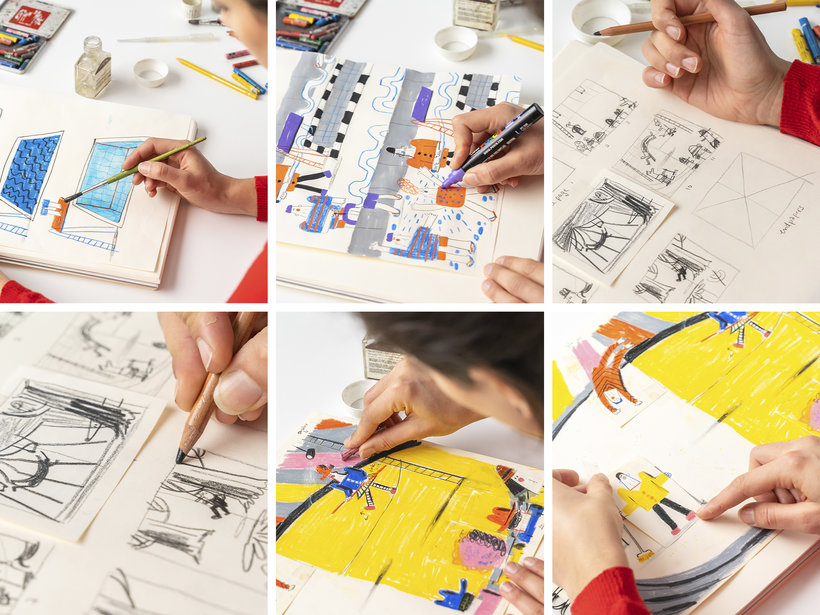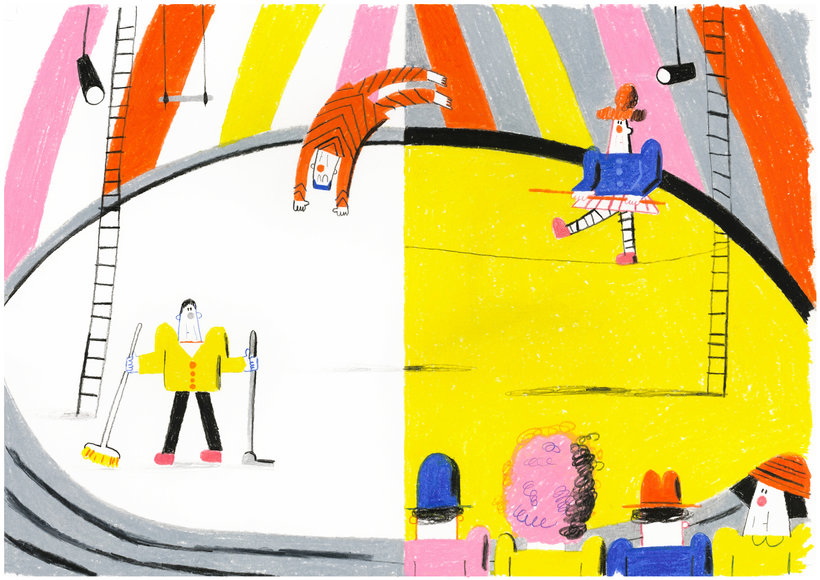Experimental Techniques for Picturebooks
Course final project
A course by Catarina Sobral , Author, Illustrator, and Director
About the final project for: Experimental Techniques for Picturebooks
Experimental Techniques for Picturebooks
“Now that we reached the end of the course, and before saying goodbye, I’d like to go through all the steps we followed. Take your time and remember that this is a journey, not a destination. The best way to enjoy it is by making it yours: explore, change it, invert the steps or repeat. Above all, have fun because that will be visible in your illustrations. With these tools, you can develop a visual narrative that is inventive, witty, and authorial. Share your process on the forum, give and receive feedback from your peer community, and I’ll see you there! After this journey, I hope you feel even more enthusiasm towards the format of the picture book, its possibilities as a visual storytelling medium, and as an expression of your own artistic identity. Now I’m going, to sum up, everything we talked about during this course so you can make your book project. I started by introducing myself, how I came up to be an illustrator, and who were the artists that most inspired my career choices and my work. Then I introduced the medium: what is a picture book, what are the particular characteristics of the format and how can we make the most of them. We then dig deeper into three of its mechanisms: colour theory with the seven colour contrasts, composition, and text-image relationship. After that, I showed how to work with two different techniques. Both are experimental techniques with mixed-media, adaptable to your own taste and way of drawing. You can keep exploring them in various manners. And also, a technique to create a narrative that is surprising and unpredictable. With this tool, you can create an array of different stories, with the same structure but distinct premises. Take a day-to-day event and change its speed, its duration, remove or add a foreign element to it. With our story lined-up, we started sketching a sequence of spreads for a wordless picture book. We did the full storyboard, developed our visual vocabulary and drew a final illustration, exploring with the oil-based crayons technique. Then we did some post-production work and made a dummy version of our book. Finally, we talked about the picture book industry and market, how to choose to whom you want to pitch your project, and ways of doing it.


Partial transcription of the video
“Now we have reached the end of the course. I hope you learned all the steps in order to make your own Wordless Picture Book. and apply new techniques to your illustrations. If you follow the lessons, you will see how easy it is to create your own visual narratives. Be original and creative when uploading your final project. I want to see all the steps of your book process. Start by developing your narrative structure, drawing a small sequence of images. I want to see how you sketch the storyboard. And solve the problems you may find. I have created my own vocabulary and grammar to a new pic...”
This transcript is automatically generated, so it may contain mistakes.
Course summary for: Experimental Techniques for Picturebooks
-
Category
Illustration -
Areas
Children's Illustration, Drawing, Editorial Design, Narrative, Picturebook, Storyboard, Traditional illustration

Catarina Sobral
A course by Catarina Sobral
Catarina Sobral is a Portuguese illustrator, author, and director of animated films. Before launching her career as a freelance illustrator, she studied graphic design and illustration, developing a unique style blending her eye-catching illustrations and strong narrative voice.
Catarina’s work can be seen regularly in illustrations for press, album covers, posters, and of course, picturebooks. Her award-winning picturebooks have been published in 16 different languages and exhibited around the world, gaining recognition from the Bologna Children’s Book Fair, the Portuguese National Illustration Award, the Portuguese Authors’ Society, the White Ravens catalog, and 3x3 magazine.
- 100% positive reviews (234)
- 3,677 students
- 21 lessons (3h 53m)
- 28 additional resources (11 files)
- Online and at your own pace
- Available on the app
- Audio: English, Spanish (Latam), French, Italian, Portuguese, Turkish
- Spanish · English · Portuguese · German · French · Italian · Polish · Dutch · Turkish · Romanian · Indonesian
- Level: Beginner
- Unlimited access forever
Category
Areas




